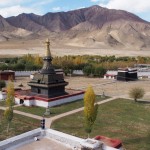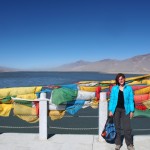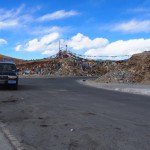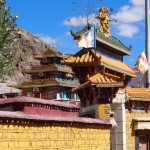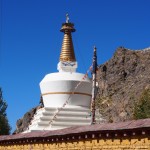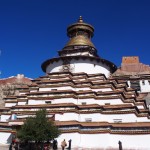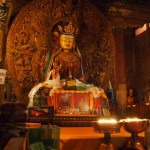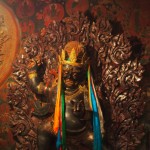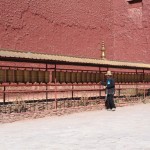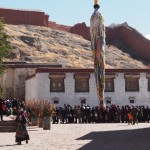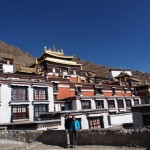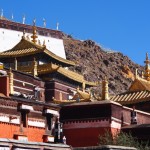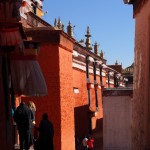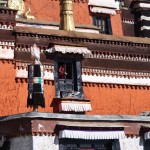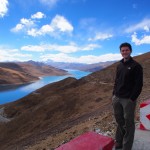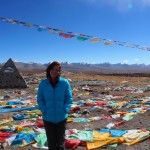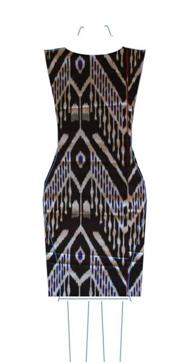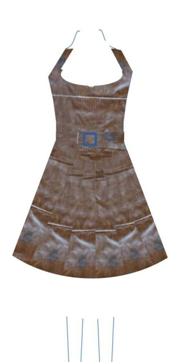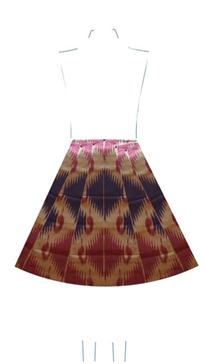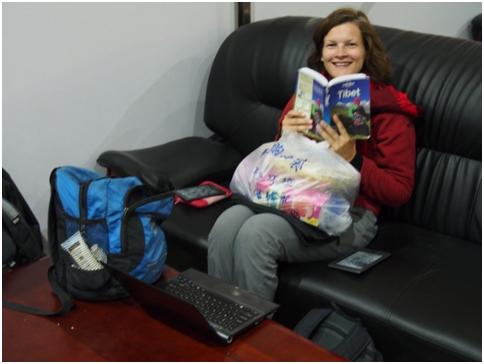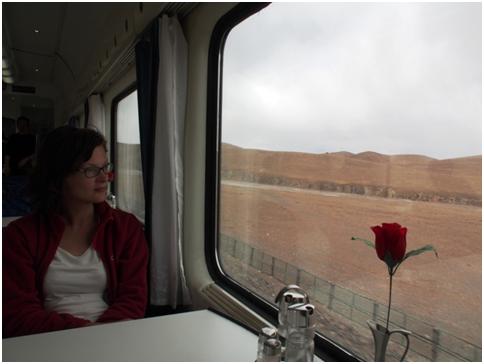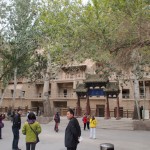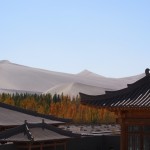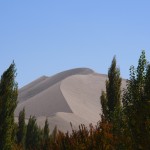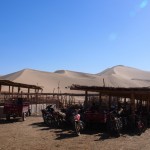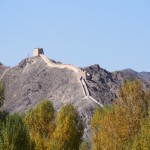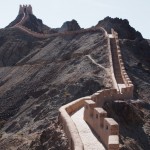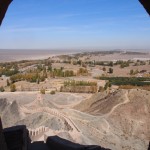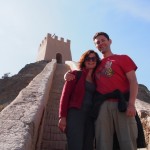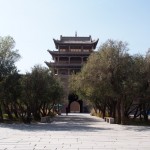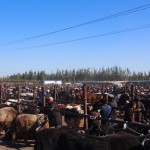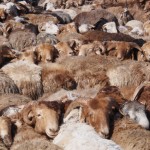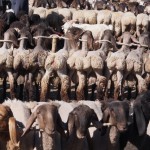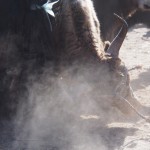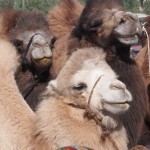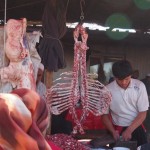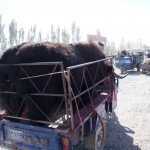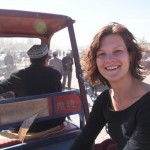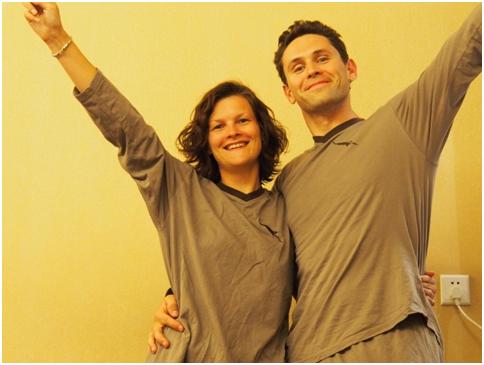There’s not many countries that have an entire school of religion named after them. Tibet is one of them (Tibetan Buddhism. Keep up in the back!), and with good reason. The average man on the street Tibetan exhibits an incredible level of piety and devotion which, to a (I’m resigned to my fate on this one) pretty soul-less ex investment banker can seem almost overwhelming. All Tibetans will have in their house various religious artifacts including statues depicting the 3 manifestations of the Buddha (wisdom, compassion and energy) and a depiction of the 4 sacred animals (elephant, monkey, rabbit and bird: this one lost me a bit, but they all eat fruit from the same tree and the elephant carries them all to do so. This translates as the need to respect your elders and the responsibility of the elders to teach the young. Buddhism. It can be pretty esoteric). So far, so normal.
It’s also pretty standard for most Tibetans to, as part of their morning routine, conduct a kora or three of the local monastery. Exercise whilst praying doncha know. Quite some few of them will take this seemingly pretty standard idea a little further, spending 2-3 hours each morning prostrating themselves in front of said monastery. Try this. Stand tall, raise your hands, palms together, above your head; then bring them down to your waist (still palms together); bend your knees and stretch out your arms until you’re lying face down on the ground; get up again; repeat. Repeat for 2-3 hours.
For the really devout, a pilgrimage is in order (obviously with the appropriate prostrating along the way). If you’re really feeling into it, then the recognized best practice here is to prostrate yourself for the entre pilgrimage. So, if you live in Eastern Tibet, for example, and fancy a cheeky little pilgrimage to Lhasa, then you prostrate yourself (see above for instruction), get up, move forward to where your fingers touched the ground, then repeat. For 1,800 kilometres. It takes 3 to 5 years and it’s really not that uncommon – James and I probably saw 5 to 10 people on the road who were mid way through this.
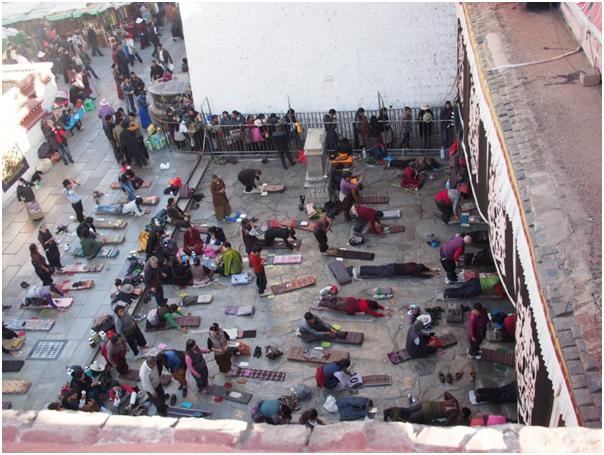
Morning prostration. Like morning coffee, but better for your soul
Of course, if you really REALLY want to prove your devotion – both to Buddhism as a general idea and to the concept of Tibet as a free nation with free religious practices (yep we’re going there. Complex and subtle issues dealt with in a 500 word blog post. You know you love it) then one sets oneself on fire within the precincts of a well regarded religious centre. This has become a surprisingly popular trend – whilst for obvious reason the stats can be a little hard to track, the sense is that tens or possibly hundreds of Tibetans, in particular monks, have chosen this particular route towards self expression.
So, if you’re the governing Chinese, how the hell do you react to that?? I mean, there’s a whole load of power contained in that there religion and even as an idol-worshipping sort of sometimes Catholic, I can see how the sheer amount of wealth (1,300kg gold stupas) poured into the monasteries would be upsetting for a secular society.
Well, we’re speaking of the Chinese, so……pragmatically.
First off, reduce the number of those pesky trouble-making monks. Monasteries now have a licensed number of monks, typically around 10% of the monastery’s capacity… although the monasteries themselves are still allowed to function – in line, presumably, with China’s stance of total religious freedom.
Second, and most important, fire brigades. Each significant monastery has airport style security to get in – no fluids, matches, or cigarette lighters allowed (at least for local Tibetans. I didn’t put this one to the test, but I suspect a Westerner could take a flamethrower in and not get stopped). Then inside the monastery itself, there’s orange clad firemen inside all major chapels – got to make sure those wooden structures don’t burn down. Lastly, there’s the firemen outside – armed with people-catching hooks, a quad-bike, flame-retardant blankets and multiple buckets of water.
No, I’m not joking. This is one of the most sinister things I have seen in many years of pootling about the globe.
I don’t know what to make of it, and I don’t know what I could do that would be better.
All I really know is that there’s little or possibly nothing on this earth that would make me set myself on fire….and that I’m hopelessly, somewhat (guiltily) gladly, absolutely out of my depth.






